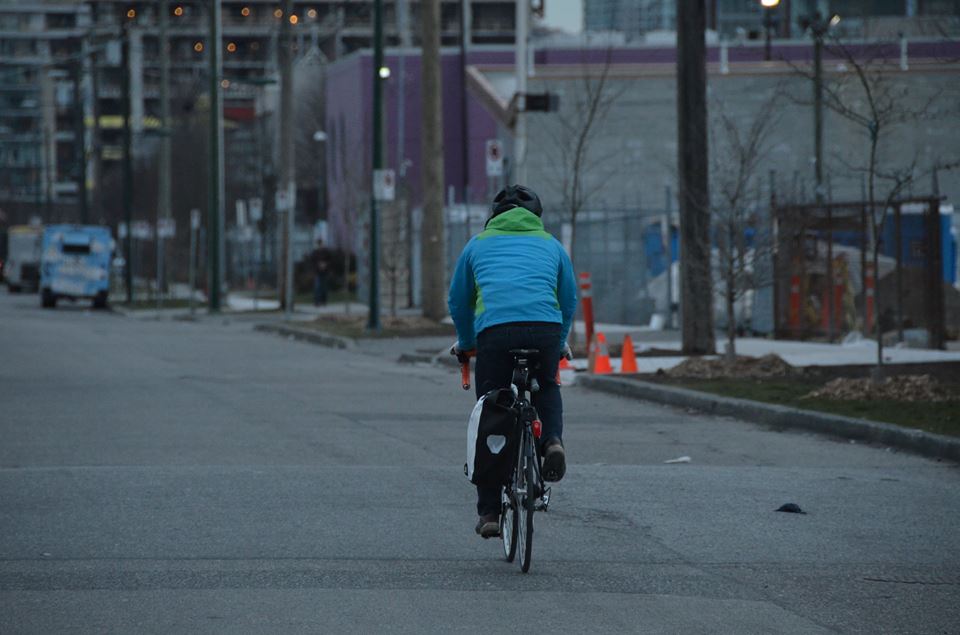For our class, each group is supposed to describe the ‘most pertinent details of [their] project implementation plan’. Because our project plan looks forty years into the future we are lucky enough to come up with hypothetical situations, and contingency plans.
All of the following suggestions are to be coordinated by the City of Vancouver staff and paid for by taxpayers dollars. Each suggested item is intended to improve the well-being and safety of Vancouverites.
Street Lights

Picture taken from: http://www.vancitybuzz.com/2014/01/vancouver-testing-implementation-bright-white-led-street-lights/
As False Creek Flats area is developed and formed into the greenest place to work, new street lights will be required to be made more eco-friendly and old street lights will also be reused where possible. White LED streetlights have been proven to be a more effective and economical way in regulating the lighting level along the streets. In accordance with Vancouver’s Transportation 2040 action plan to increase the number of pedestrians and bikers, 300 LED streetlights will be installed around the False Creek Flats area to improve public safety and visibility which may reduce the number of crimes and also encourage more walking and biking during night time.
The installation of LED streetlights will begin in the end of 2014, and is targeted to be completed by the beginning of 2016. City staff would complete this implementation as per code and regulations, and also follow the safety regulations set in installation and safety protocol. The switch into LED streetlights will yield in a 40% saving in electricity consumption, and a reduced in maintenance cost. The cost for this implementation will be taken on the taxpayers of Vancouver.
Solar Panels
 Picture taken from: http://jcwinnie.biz/wordpress/imageSnag/solarcarport2_f.jpg
Picture taken from: http://jcwinnie.biz/wordpress/imageSnag/solarcarport2_f.jpg
The proposed 2014 Building By-law under the Transportation 2040 action plan supports low-carbon vehicles by making new buildings accommodate electric vehicle parking in at least 10% of available parking spots. To further the city’s carbon-neutral goal, solar powered electric vehicle charging stations could be installed in these parking spots. These solar powered charging stations would be implemented under the Building By-law for businesses.
To test the effectiveness of solar panels, the solar panels would first be installed in 2015 in the Emily Carr University parking lots as initiative to Vancouver’s greenest city action plan, as well as Emily Carr University’s commitment to sustainability. Extra energy gathered by the solar panels will also be captured and could be used to power buildings. The initial cost of these solar panel charging stations would be taken on by Emily Carr, but the cost would be accommodated by parking fees, its long term benefits including energy generation, and government incentives. If proven successful, the city can implement this under the Building By-law and push Vancouver towards the greenest city on Earth.
Recycled Sidewalks

 Pictures taken from: http://www.jefffitzpatrick.com/Blog.php/vancouver-s-first-full-rubber-sidewalk
Pictures taken from: http://www.jefffitzpatrick.com/Blog.php/vancouver-s-first-full-rubber-sidewalk
Concrete produces one tonne of CO2 emissions per tonne used. To reduce the amount of concrete poured in the area during development, in accordance with Vancouver’s greenest city 2020 action plan, recycled rubber sidewalks could be used instead. The long term value of the product makes up for the higher installation cost. The modular design of rubber sidewalks lowers maintenance, replacement and maintenance costs, and the rubber doesn’t crack due to root growth of nearby trees. Also, the rubber sidewalks have longer life cycles than traditional sidewalks.
Through collaboration of the City of Vancouver and the Tire Stewardship BC Association, sidewalks in the area will be replaced over the span of several years in order to mitigate costs. The new rubber sidewalks could be installed as old, damaged are removed for replacement, and for new construction. The cost could be subsidized through the Tire Stewardship BC Association fees paid through purchasing new tires, as per their current model.
Timeline:
- Summer 2015 – First showcase sidewalk installed
- Summer 2020 – Half of the sidewalks in the area are recycled rubber
- Summer 2030 – All of the sidewalks in the area are recycled rubber
Swales

Picture taken from: http://www.susdrain.org/images/c.6_- swales_and_conveyance_channels_-_swales.jpg
Swales are a sustainable alternative to traditional storm drains which limit the harmful effects on the environment and will be a big step towards Vancouver’s goal of being the greenest city in the world by 2020. Along with being sustainable, swales are easily installed, have a longer lifespan, and are cheaper to maintain than traditional storm drains.
Swales would initially be installed on Industrial Ave. and after review and feedback it would be determined whether they would be beneficial to install on all streets throughout the False Creek Flats. Ideally the installation process would follow a similar timeline to the recycled sidewalks, making construction more efficient, both economically and physically.
Expected Cost
$8.50 – $50.00 per linear foot depending on depth and width
Task sequence
- Demolish curbs and existing system
- Install swales and new sidewalk system
- Estimated lifespan of 50 years
Estimated Completion Time
Start in 2015 and continue until 2030 depending on feedback and project review
Risk Issue
Litter possibly infiltrating swales
False Creek Flats presenting at UBC Poster Showcase on March 31st, 2014.




